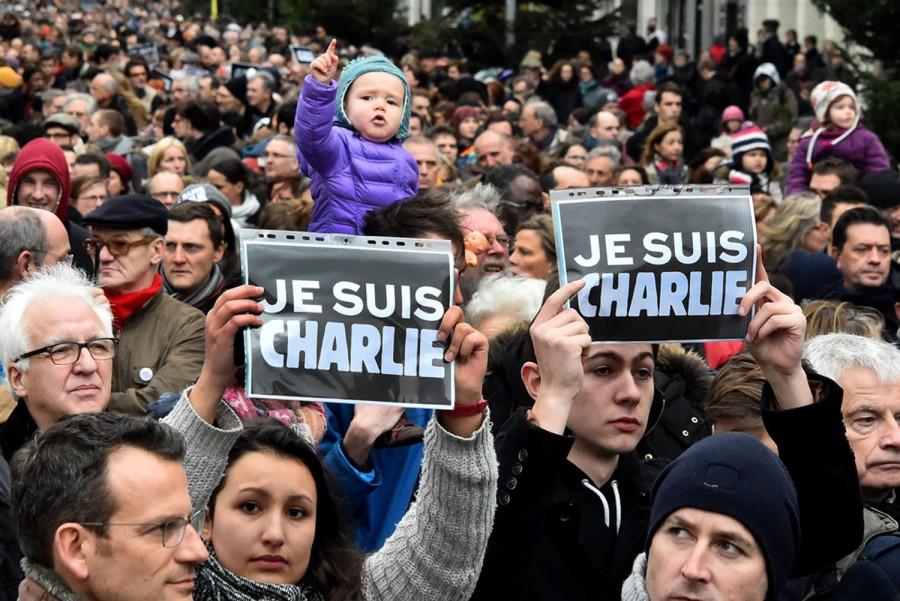The death of a cartoonist
Stephane Charbonnier, Jean Cabut and George Wolinski, along with 14 other victims, were all shot and killed by Islamic extremists over offensive cartoons published in a small satirical French publication, Charlie Hebdo.
Over the years Charlie Hebdo published numerous images of the Prophet Muhammad in insulting manners. Not only did the publication mock the Prophet Muhammad, who is the founder Islam and a respected figure head, but also it crossed the line by showing images of the prophet, which is taboo for some Muslims. The attitude toward depicting the prophet varies dramatically from region to region in history, and although the images of the prophet are not unheard of, they are rare and only used for historical purposes, according to The Metropolitan Museum of Art.
Though this event occurred thousands of miles away, it has raised debates here in America about the rights and wrongs of satire.
After a discussion about satire and Charlie Hebdo in her AP English Language and Composition class, senior Audrey Twining says she thinks people have the right to voice their opinion, but Charlie Hebdo went too far.
“I think [Charlie Hebdo] should have stopped after the first bombing,” said Twining. “They should have taken it as a warning sign that they need to stop insulting that specific group because they are riled and don’t like any criticism on their religion.”
Local editorial cartoonist for the Detroit Free Press Mike Thompson said in an interview with Uncaged about the attack, “…the right to speak freely should be universal. There’s a difference between respecting someone’s religion and obeying the rules of their religion,” said Thompson. “Non-Muslims shouldn’t be expected to obey the rules of Islam, nor should non-Christians be expected to obey the rules of Christianity.”
AP Lang senior Jacob Weiland thinks, “[Charlie Hebdo] takes a very strong stance in criticizing basically everyone to point out their flaws. People need to learn to accept that people see their flaws in their system.”



